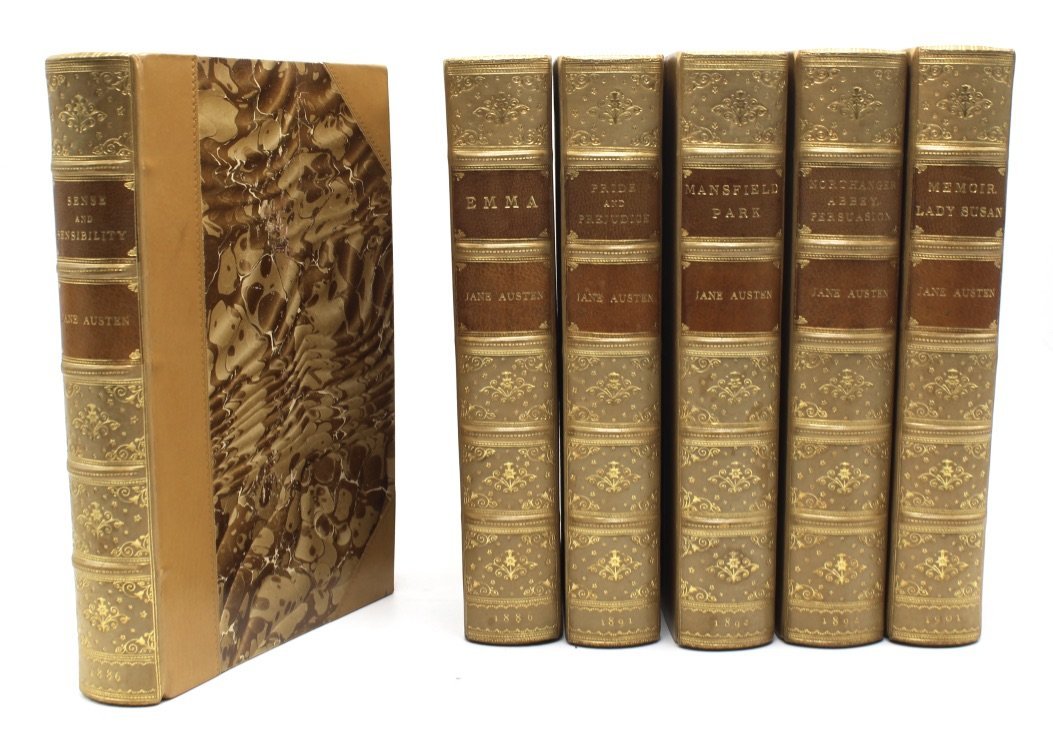Rare Second Edition 1802 Printing of The Federalist Now Available for Purchase
New to our DC shop is a rare second edition, two volume printing of one of the most important works of American political thought ever written, The Federalist. According to Thomas Jefferson, the Federalist papers were "the best commentary on the principles of government." This second edition, published in 1802, is particularly collectible, as it is the first edition to identify Alexander Hamilton, John Jay, and James Madison as the principal authors, as well as the first edition to include text of the Constitution, which is missing from the first printing. It was also the last printing issued during Hamilton’s lifetime.

Hamilton, Alexander, James Madison, and John Jay. The Federalist, on the New Constitution. By Publius. Written in 1788. To Which is Added, Pacificus, on the Proclamation of Neutrality. Written in 1793. Likewise, The Federal Constitution, with all the Amendments. Revised and Corrected New-York: George F. Hopkins, 1802. LINK.
In May of 1787, 55 delegates convened in Philadelphia to address the current problems with the Articles of Confederation and Perpetual Union, signed in 1777. The early Articles of Confederation had granted Congress the power to conduct foreign policy, maintain armed forces, and create money, but in practice this centralized government had little authority over individual states. This weak central government was struggling to pay mounting debts from the Revolutionary War, due to its lack of ability to levy taxes or regulate state commerce.
As the delegates worked through possible changes to the Articles, they realized they needed more than minor amendments and edits. Instead, the delegates called for an entirely new system with a strong central government divided into three equal branches, the legislative, executive, and judicial. The new Constitution was proposed by 39 delegates in September of that same year. It then went to the states for ratification, igniting intense debate between Federalists and Antifederalists.
Federalists favored the ratification of the Constitution as written and Antifederalists opposed the Constitution and resisted giving stronger powers to the national government. In New York the opposition to the ratification was particularly strong. Antifederalists published articles in the press criticizing the consolidated government, fearful to give up the local autonomy won by the Revolutionary War.

Portrait of Alexander Hamilton by Jacques Reich, Etching, 1904. LINK.
In response to those critiques, Constitutional Convention delegate and New York lawyer and statesman Alexander Hamilton decided to write a series of essays in defense of the new Constitution. To assist him, he recruited John Jay, another New Yorker and Secretary of Federal Affairs under the Articles of Confederation. They later enlisted the help of James Madison, a Virginian living in New York while serving in the Confederation Congress. To remain anonymous, Hamilton chose the pen name “Publius” after Publius Valerious Poplicola, one of four Roman aristocrats who led the overthrow of the Roman monarchy and established the new Roman Republic in 509 BC.

Title page to Vol. I of our second edition printing of The Federalist. LINK.
Hamilton penned the first essay, which appeared in the Independent Journal on October 27, 1787. John Jay wrote the next four essays, “Concerning Dangers from Foreign Force and Influence,” but had to stop working on the project due to an attack of rheumatism. Jay only wrote one more essay, in March of 1788, “The Powers of the Senate.” Madison wrote 29 essays and Hamilton wrote an impressive 51 essays.
It is important to note that although The Federalist articles are now considered touchstones for interpreting the Constitution and many of our founding principles of government, at the time of printing, The Federalist essays were not widely circulated outside of New York. The first article was published in the Independent Journal. Later essays were published at various intervals in the Independent Journal, the New-York Packet, the New York Daily Advertiser, and the New-York Journal, followed by scattered publications “in only a dozen papers outside of New York” (Chernow, 261). The articles also failed to convince New York voters, who sent more Antifederalists than they did Federalists to the state ratification convention.
It is credited, however, with cementing the vote in Virginia. In March of 1788, the first 36 were issued in a collected bound edition, with a second volume containing numbers 37-85 published on May 28, 1788. The bound edition of the essays played a key role in the campaign to win over Virginia. In theory, the Constitution could have been ratified without the approval of those two populous states. In practice, however, the Founding Fathers knew that their approval would be crucial to the success of the new government. “The 85 essays… were designed as political propaganda, not as a treatise of political philosophy” (PMM, 234).
Nevertheless, in July of 1788, with a narrow majority, the New York delegates did vote in favor of the Constitution, on the condition that amendments would be added to secure personal rights. Hamilton opposed the idea of written rights in his essay Federalist 84, arguing that such a bill was unnecessary and even harmful. And yet it was Madison who later drafted the Bill of Rights in 1789, while serving as a representative in the nation’s first Congress.






